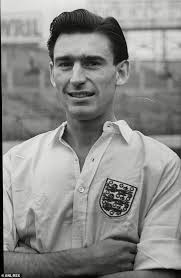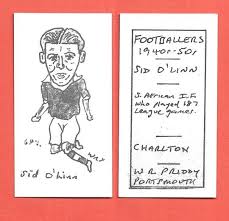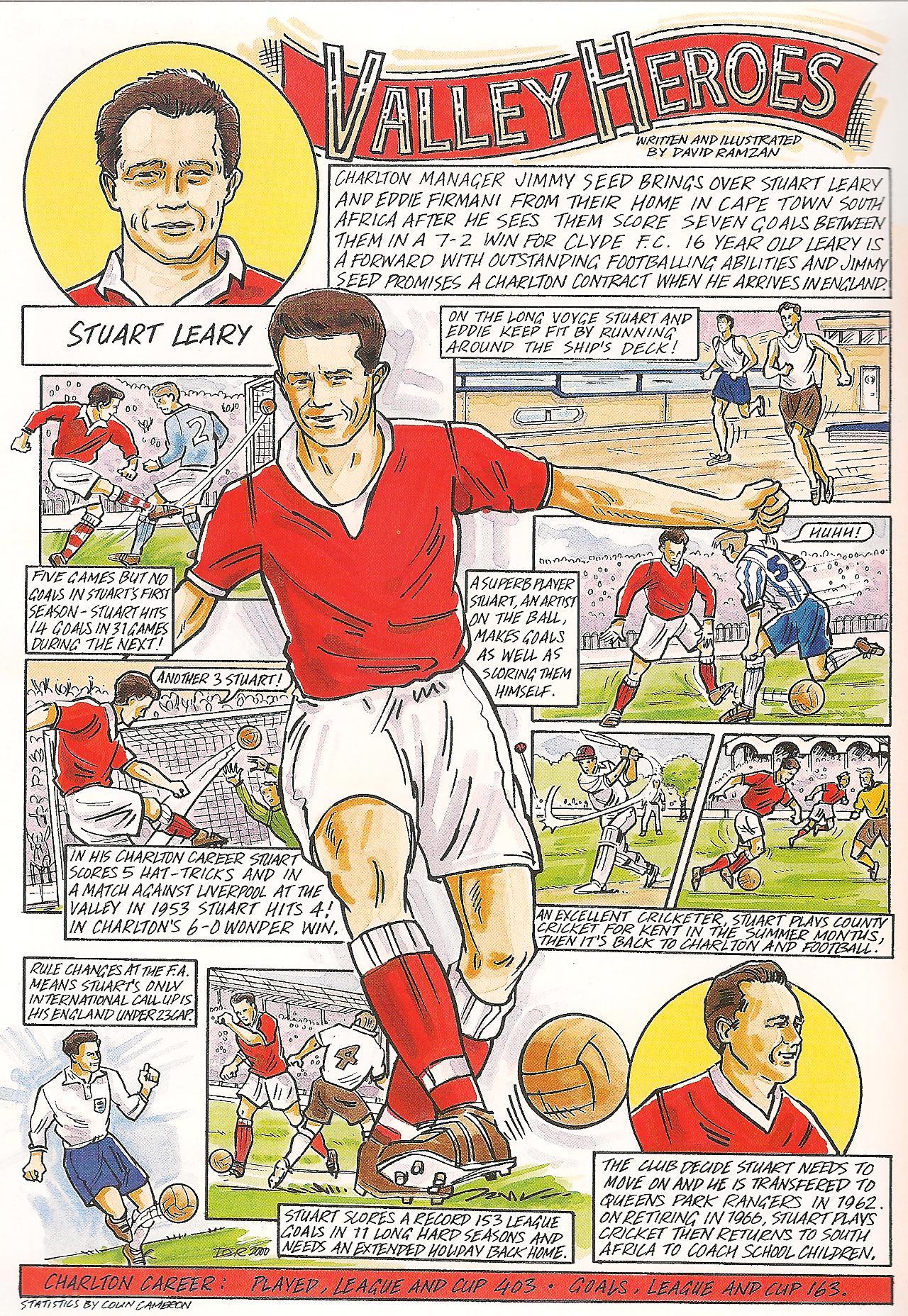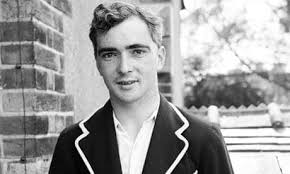Charlton Athletic is a team that is deemed to be in Kent when they are playing well, but definitely in South London during their less successful seasons. For much of the 1940s and 1950s, they were certainly in Kent.
At that time, there was a very close connection between Charlton and Kent CCC. The main link was, of course, the Kent cricketer, and later President, who also played for many seasons for Charlton Athletic and won one England cap as a footballer, before becoming a director of Charlton for many years. Derek Ufton is now the oldest surviving England international, but only the second oldest capped Kent cricketer after Bob Wilson, but his memory of his twin sports careers and those who played with him is as clear as ever.

Derek himself played 263 games for Charlton between 1949 and 1959, but in a recent conversation he told me a lot about the other Kent cricketers who also played for the Addicks in his day. The long-serving manager of the club, Jimmy Seed, had been told that there were a lot of good footballers in South Africa, so took a chance on a player called Sid O’Linn in 1947, on the basis that it would only cost him the boat fare if it all went wrong. O’Linn, who had already played twice for the South African national team, proved to be a great success at Charlton, staying for ten seasons, making 187 appearances and scoring 32 goals. He also played for Kent during the summer months between 1951 and 1954, but then the county let him go. He acted as deputy wicket-keeper to Evans and Ufton, but also batted well enough to earn his place as a batsman, although he was never capped by the county. His highest score for the club was 111 not out, against Surrey at the Oval in 1952. Apparently, he didn’t like the English much, but all the same married an English girl. He went back to South Africa and played for Transvaal, and was chosen in the squad for the 1960 tour of England. The only problem was that wives of the players were not allowed to be in England while the tour was going on – too distracting from the game in hand, don’t you know, old boy – but O’Linn’s wife, from whom he was by now estranged, was living in England. So Sid promptly divorced her, thus solving the problem, to his and the South African selectors’ satisfaction, at least. He was picked for all five Tests on that tour. Ufton remembers him as “not the easiest man”, a verdict with which O’Linn’s ex-wife would no doubt agree.

After O’Linn proved so successful at the Valley, Jimmy Seed found two more young South African lads, Eddie Firmani and Stuart Leary. He brought them over in 1949, when they were still only 16 years old, and too young to be on Charlton’s professional books. However, it was quickly obvious that Leary was an exceptional footballer. In Ufton’s view he could have been one of the greatest footballers ever, if he had not suffered ankle injuries, but Seed was less enthusiastic about Firmani. He told the pair as they left to go back to South Africa after their first winter in England, that he wanted Leary to come back the next year, but was releasing Firmani. Leary replied, “If Eddie doesn’t come, then I’m not coming back either.” So Seed got them both back the next year. That turned out to be a stroke of luck, because Firmani went on to be a pillar of Charlton’s side for some years, before he was transferred to Sampdoria and even played three games for Italy, qualifying through an Italian grandfather. Leary played for England at Under-23 level, but because his father and he were both born outside the U.K., he could not qualify for the full England team. He played 376 games for Charlton, scoring 153 goals, before moving to QPR in 1962, and playing another 94 games for them. He began playing for Kent in 1951, and had a long and successful career with the club, scoring 18 centuries and averaging just over 30 in 381 games. He was a right-handed bat with a good defence, and in the field, caught everything. He also took 140 wickets for the county with his leg-breaks. He was still a member of the playing staff in our Championship year of 1970, but by then could not command a regular place in the side, and the following season was his last with the club. Ufton remembers him with affection, although he could be a “bit difficult off the pitch” because “he liked the girls”, and, it seems, they liked him. Leary’s end was sad. He was found dead on the top of Table Mountain in 1988, having been lying there for perhaps two days before he was discovered. He was only 55.

There is a fourth man who played for both Kent and Charlton in this era, for both teams as an amateur: Tony Pawson. Tony was an outside-right who was perhaps more quick than skilful, but he was an England amateur international and he played two games for Charlton in the 1951-52 season. These were games over the Christmas holiday, when clubs often played three games in four days, and the game against Spurs included H.A. Pawson on the team sheet. At half-time Tottenham were 2-0 up, but with five minutes to go, Charlton had pulled things back to level pegging. Pawson got the ball and set off on a run down the right wing, and had almost reached the goal line when he put in a speculative cross. The ball seemed to hang in the air as it floated across the goal area out of everybody’s reach, and almost apologetically drifted into the top corner of the net. Final score: 3-2 to Charlton Athletic. Tony also played 43 games for Kent, finishing with two centuries for the county and a batting average of 33.33. He was capped by Kent in 1946. He was also a world champion fly fisherman, awarded an OBE for services to angling, and in later life he was a frequent and jovial visitor to the St. Lawrence ground.

I realise there is still one more cricketing Kent footballer I have not written about – Leslie Ames of Clapton Orient, Gilingham, Kent and England, but that will have to wait for another day.
A fascinating article. Thank you for it. I met, or saw, all four individuals mentioned in it.
Sadly, on a visit to Table Mountain a few years ago, I also saw the (too) many stones remembering those who lost their lives on there.
Stuart Leary, who was talented at both soccer and cricket, was one of them.
You missed out Freddie Lucas who played for both Kent and Charlton at around this time.
Sorry to have taken so long to reply to your comment. I’ve also not mentioned Leslie Ames (yet) so will add Freddie Lucas to the list when I have another go at Kent’s cricketing footballers.